Who We Are
Geospatial data and analysis is critical for conservation, from planning to implementation and measuring success. Every day, mapping and spatial analysis are aiding conservation decisions, protected areas designation, habitat management on reserves and monitoring of wildlife populations, to name but a few examples. The Geospatial group focuses on all aspects of this field, from field surveys to remote sensing and data development/analysis to GIS systems.
How to Get Started
Want to learn more about how remote sensing is used in conservation? Check out the first two episodes of this season of Tech Tutors, where our Tutors answer the questions How do I use open source remote sensing data to monitor fishing? and How do I access and visualise open source remote sensing data in Google Earth Engine? You can also check out our Virtual Meetup Archive for a range of panels that overlap with Geospatial topics, or take a look at our Earth Observation 101 lecture series from Dr. Cristian Rossi.
Our Purpose
The WILDLABS Geospatial Group is for conservation practitioners, geospatial analysts, and academics that want to:
- Share geospatial resources, best practices, data, and ideas;
- Network amongst geospatial and data practitioners;
- Create peer learning opportunities;
- Promote the use of free and open-source geospatial software; and
- Improve the use of GIS software and geospatial analyses in conservation management and research.
Group curators
3point.xyz
Over 35 years of experience in biodiversity conservation worldwide, largely focused on forests, rewilding and conservation technology. I run my own business assisting nonprofits and agencies in the conservation community



- 7 Resources
- 69 Discussions
- 12 Groups
- @ahmedjunaid
- | He/His
Zoologist, Ecologist, Herpetologist, Conservation Biologist





- 75 Resources
- 7 Discussions
- 16 Groups
Fauna & Flora
Remote Sensing Scientist, Conservation Technology & Nature Markets @ Fauna & Flora - WILDLABS Geospatial Group Co-Lead



- 42 Resources
- 49 Discussions
- 9 Groups
No showcases have been added to this group yet.
Currently a data scientist in industry working on mechanistic models of risk, previously worked on modeling coral reefs. I am interested in the potential for emerging technologies and new ideas to help us solve environmental crises.
- 0 Resources
- 0 Discussions
- 14 Groups
- @Kasi
- | He/him
Game Rangers International
Kasi Amor Kalande is a young conservationist with experience in elephant movement research, GIS, and conservation technology.
- 1 Resources
- 0 Discussions
- 7 Groups
- @claumemo
- | she/her
- 0 Resources
- 0 Discussions
- 7 Groups
- @Manahil_ijaz
- | she
I’m a nature enthusiast who loves exploring wildlife and ecosystems. Through my research in ecology, I channel this passion into protecting and preserving biodiversity.
- 0 Resources
- 0 Discussions
- 3 Groups
A Highly Motivated and Enthusiastic Scholer. I done M.phil in Zoology From PMAS Arid Agriculture University Rawalpindi. My research Work focused on Identifying the pathogens of honeybee in Pakistan and finding there control method through Green Synthesis Nanotechnology.
- 0 Resources
- 0 Discussions
- 1 Groups
- 0 Resources
- 0 Discussions
- 1 Groups
- @Sumbul
- | Herpetologist
- 0 Resources
- 0 Discussions
- 1 Groups
- @Phillip_Swart
- | He
I'm a conservationist working in the Vulture conservation space in South Africa with a huge passion for technology.
- 0 Resources
- 0 Discussions
- 17 Groups
- @Prabisha
- | she/her
Dedicated research scientist with over 8 years of experience in cartography, spatial analysis, and statistical modeling to tackle environmental, public health, and socio-economic challenges. Passionate about leveraging geospatial technology to drive impactful solutions.
- 0 Resources
- 0 Discussions
- 12 Groups
Ecodash.ai is an artificial intelligence platform for ecological modeling, design, and restoration.

- 0 Resources
- 4 Discussions
- 7 Groups
- @Hadjah
- | Her
Hadjah Naggayi is a land surveyor/GIS analyst by profession. She is a climate justice activist, and an upcoming Fitness fitness instructor. She is currently working with Actogether Uganda as a Data manager
- 0 Resources
- 0 Discussions
- 2 Groups
- @vinz
- | Him
United Nations Environment Program World Conservation Monitoring Centre (UNEP WCMC)
GIS & EO Specialist with almost 20 years experience working with GIS in different topics. I am now working in Digital Tranformation Team at UNEP-WCMC mainly focus on Protected Planet programme to upgrade National and Global Stats for Target 3.1 (30x30) and UN Biodivesity Lab.

- 0 Resources
- 2 Discussions
- 1 Groups
https://doi.org/10.3390/rs15194703
1 December 2024
R Package - pMEM
30 November 2024
R Package - swaRmverse
28 November 2024
BATS
28 November 2024
Statistics Globe - Basics to Mastery: The Ultimate Course on Statistical Methods in R
27 November 2024
https://doi.org/10.3390/fire7110413
27 November 2024
The paper looks at technology advances for vegetation cover changes monitoring. For example, computer vision methods to infer 3D parameters via contextual learning from optical images.
25 November 2024
Interesting webinar on the use of advanced technologies(e.g. Artificial Intelligence, cloud computing, drones, camera traps and satellites) for biodiversity monitoring in the Amazon. Also available in Spanish.
25 November 2024
FAO has developed a dashboard that provides an overview of technological solutions (platforms and satellite imagery etc.) that countries use to monitor forest dynamics and improve reporting on forest related emissions...
25 November 2024
Treeconomy is a venture-backed earth-tech startup working at the dynamic intersection of technology, ecology, and finance.
18 November 2024
September 2025
October 2025
event
November 2025
event
event
March 2026
February 2024
January 2024
131 Products
Recently updated products
| Description | Activity | Replies | Groups | Updated |
|---|---|---|---|---|
| I’m over in New York City for Geo for Good this week and wondered if anyone else in the community is there? Would be lovely to say hi if so. |
|
Geospatial | 3 days 15 hours ago | |
| Very interesting. Thanks for sharing |
|
Geospatial, Conservation Tech Training and Education, Early Career, Earth Observation 101 Community | 1 week ago | |
| We're going to try it for a NatCap assessment this year, but no previous experience with it. |
|
Geospatial, Software Development, Climate Change, Funding and Finance, Marine Conservation, Open Source Solutions | 1 week 1 day ago | |
| want to join 2025 contest for humpback whale photos in Juneo Alaska of Kelp |
|
Citizen Science, Conservation Tech Training and Education, Drones, Emerging Tech, Geospatial, Human-Wildlife Coexistence, Marine Conservation, Open Source Solutions | 2 weeks ago | |
| This is awesome!! |
|
Conservation Tech Training and Education, Drones, Emerging Tech, Geospatial, Open Source Solutions | 2 weeks 1 day ago | |
| Would be interested to learn more! What data, software and tools are you using to build your models? |
|
Climate Change, Geospatial | 3 weeks 1 day ago | |
| Hi Olivier! I'm Alex from the WILDLABS community team. Thank you for sharing EcoTeka! I made a page for it on The Inventory, our wiki-style database of conservation technology... |
|
Geospatial | 3 weeks 2 days ago | |
| Wow this is amazing! This is how we integrate Biology and Information Technology. |
|
Camera Traps, AI for Conservation, Build Your Own Data Logger Community, Data Management & Mobilisation, Marine Conservation, Protected Area Management Tools, Geospatial | 1 month ago | |
| Good question. Not sure everyone recommends ArcGIS anymore, but it is commonly used as a desktop GIS. However, it's not free. QGIS, R, and various Python packages are free. But... |
|
Citizen Science, Geospatial, Human-Wildlife Coexistence | 1 month ago | |
| Very interesting! Thanks for posting this. I found the NASA ARSET Tutorial quite useful for an overview on PACE before delving into the data. Highly recommend it if you're new to... |
|
Geospatial, Latin America Community | 1 month 1 week ago | |
| Wow great effort everyone! We wouldn't have been able to have such a successful group without all our members and our wonderful speakers @LeanneTough , Dr Kuria Thiongo, @... |
|
Geospatial | 1 month 1 week ago | |
| 15 years ago I had to rebuild the dams on a game reserve I was managing due to flood damage and neglect. How I wished there was an easier,... |
|
Drones, Conservation Tech Training and Education, Data Management & Mobilisation, Emerging Tech, Geospatial, Open Source Solutions | 4 months 1 week ago |
WWF student assistant wanted: forest impact monitoring with Earth Observation
29 August 2022 4:41pm
Conservation Technology Research Internship
26 August 2022 4:58pm
Research Scientist - NASA Ames Earth Science Division
25 August 2022 2:25pm
RCMRD Map Competition 2022
19 August 2022 1:54pm
A vegetation carbon isoscape for Australia | TERN Australia
19 August 2022 12:40pm
Research Technician - Unoccupied Aircraft Systems Pilot and Geospatial Analyst
10 August 2022 10:40pm
3yr Postdoctoral Associate: Remote Sensing and Unoccupied Aircraft Systems
10 August 2022 5:29pm
Pacific Geospatial Conference 2022
10 August 2022 2:35pm
Earth Ranger Projection
28 June 2022 10:15am
28 July 2022 11:47am
HI benard sorry am replying late,and yes i the data was exported as shapefile 2.i used same projection which is 37N WGS 84 on both apps and still the exported shape file projection read away from the wanted location
funny story is,the exported shapefile pins quite well when using QGIS but then on ARC GIS pro i don't get what the issue is
Postdoc: Spatial Ecology & Conservation of Bustard spp.
22 July 2022 7:45pm
International Workshop on Animal Movement Ecology & Human Mobility
22 July 2022 7:25pm
30 August 2022 6:24pm
CERES TAG
22 July 2022 3:36am
Conservation Data Coordinator
15 July 2022 11:02am
Data Analysis Research Associate, World Resources Institute
14 July 2022 6:45pm
Service Designer
13 July 2022 9:05am
Director, Imaging Technology Lab (Woods Hole Oceanographic Institution)
11 July 2022 6:32pm
Data Fellow at National Center for Ecological Analysis & Synthesis
9 July 2022 1:02am
Postdoc: Environmental Remote Sensing
30 June 2022 2:10pm
Research Associate in Data Fusion for Forest Monitoring & Modelling
30 June 2022 2:05pm
Postdoc: Remote sensing of invasive alien trees & ecosystem degradation in Cape Floristic Region
ARSET webinar series - Monitoring Aquatic Vegetation with Remote Sensing
27 June 2022 10:44pm
New Conservation Tech Directory update
27 June 2022 4:45pm
Research Associate in Data Fusion for Forest Monitoring and Modelling
15 June 2022 10:49am
New Paper: Comparative Analysis of Multi-Platform, Multi-Resolution, Multi-Temporal LiDAR Data for Forest Inventory
13 June 2022 2:48pm
New remote sensing papers/datasets
13 June 2022 1:53pm
Multiple ML & ecology positions open at Pachama
4 June 2022 12:38pm
Postdoc: evaluation of tropical forest restoration
4 June 2022 12:03pm
Global Forest Watch Small Grants Fund
1 June 2022 4:19pm





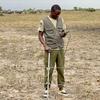


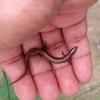
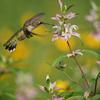





















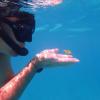





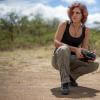






30 June 2022 12:40pm
Hi Turu,
To be able to assist you, I would like to understand the following first:
1. What feature of data did you export/get from EarthRanger? i.e shapefile? CSV? etc.
2. What coordinate system was your data from EarthRanger?
2. When plotting did you match/project with the correct coordinate system?
3. Do you think there was an active layer with a different projection system in your work frame?
4. Did you check whether your work frame projection was correct to match what you were plotting?